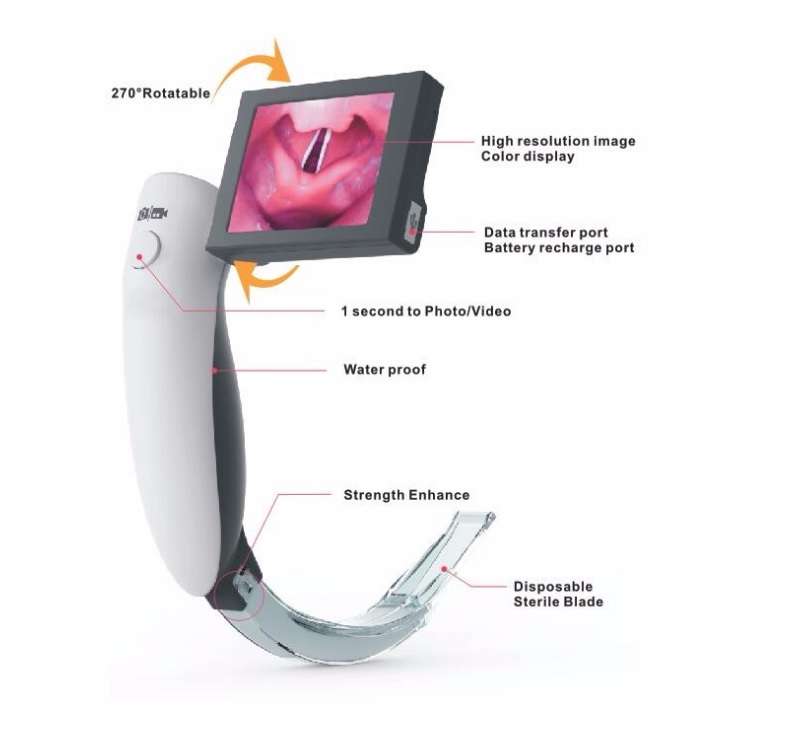A laryngoscope is an instrument that is used by medical professionals to examine the larynx and for the placement of an endotracheal tube. A specialist ENT (ear, nose and throat) doctor will use the instrument to perform a laryngoscopy. Broadly speaking there are two types of laryngoscopes: indirect and direct.
The indirect version is where the doctor will shine a light in down the patient’s mouth and use a mirror to see down the throat. The direct version is where a doctor uses a special device (either rigid or flexible) to see further down the patient’s throat. The rigid version is often used for surgery and the patient will be under anaesthetic. Whereas with the flexible version, the doctor will use special medicine to dry up the liquids in your nose/throat and will then insert a thin scope through your nose or mouth. Even if a flexible version would be more appropriate doctors may choose to use the rigid version if a patient’s gag reflex is sufficiently high.
A laryngoscope is used for a variety of reasons. These can include finding the causes of throat pain, examining the reasons by vocal problems, checking for blockages amongst other things. A laryngoscopy can also be used to remove a foreign object from the throat.
On the day of the procedure the patient must not eat or drink anything for up to 6 hours before the laryngoscopy. A laryngoscopy usually takes around 10 to 15 minutes to complete. If anaesthetic has not been administered then the patient can leave straight away, however if anaesthetic is administered then the patient may need an overnight stay to recover sufficiently. The patient’s throat will be sore, so pain killers may be required. It is advised that the patient rests his/her voice for a few days after the procedure.
A laryngoscopy is among the safest medical procedures available. However, as with most medical procedures, a laryngoscopy does carry some risks. The procedure may cause swelling in the throat and could potentially block the airway. If you have existing inflammations in the area where the laryngoscope will pass then there is a chance that this will be exacerbated by the procedure. Additionally, there is a minor risk of tooth damage.
Here at ADS Medicare we strive to provide the most cutting edge products to our customers so that they can offer industry leading services to their patients.We have a variety of laryngoscopes available. These include the Disposable Video Larynogscope and the Reusable Video Laryngoscope. These models of laryngoscope are used all over the world in hospitals and clinics with great success and results. For more information about these products (and others) please do not hesitate to Contact Us.
References and Useful Links
https://www.nhs.uk/conditions/laryngeal-cancer/diagnosis/
https://lifeinthefastlane.com/ccc/laryngoscope-and-blades/




Leave A Comment